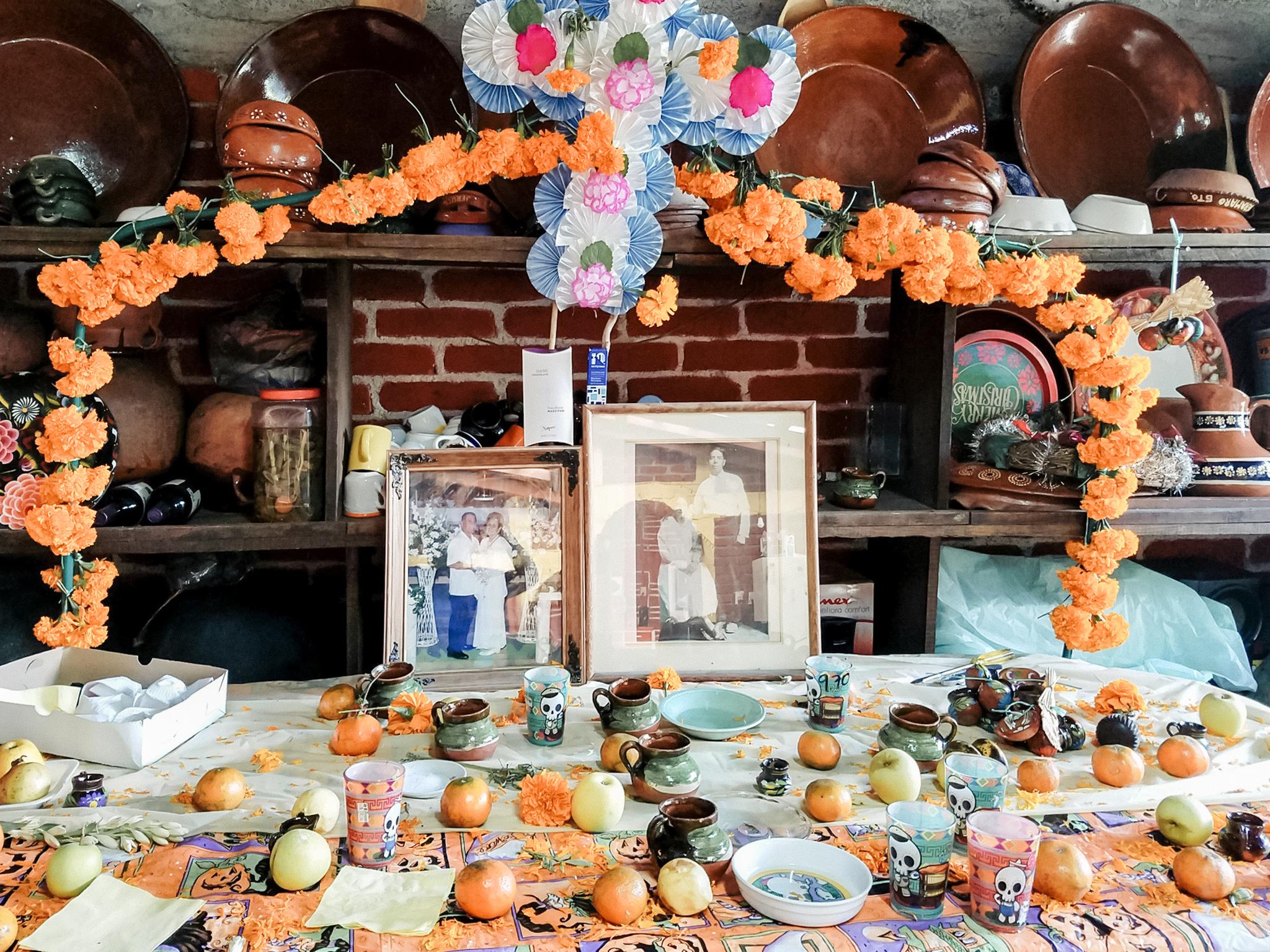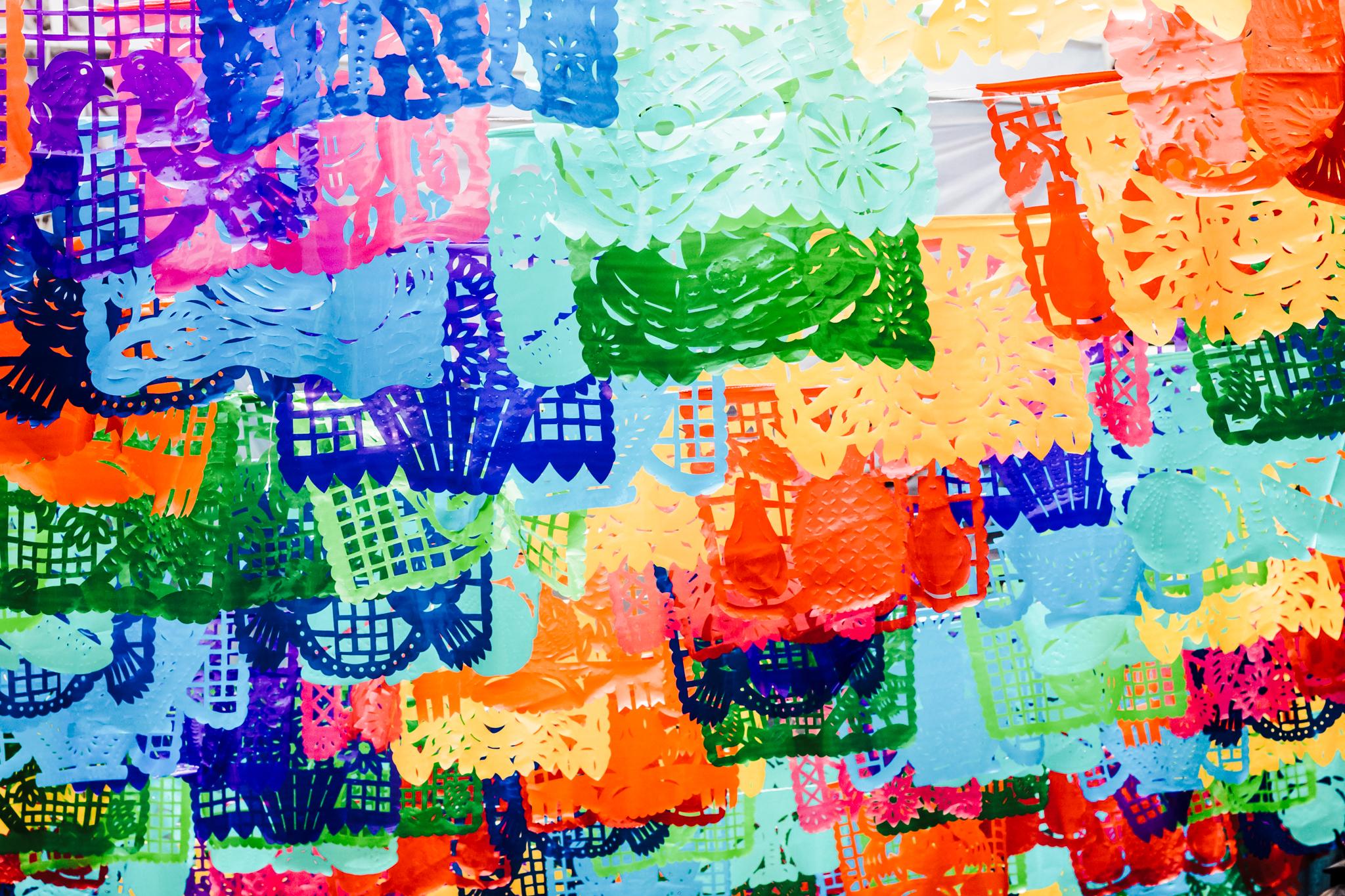Known in Spanish as “El Día de los Muertos,” Day of the Dead is celebrated throughout Mexico largely on November 1st and 2nd.
It’s deeply rooted in tradition that goes back generations.
There are many ways to show your respect for those who’ve passed, but the most common by far is to build an altar, or ofrenda, to honor their memory.
Whether the Day of the Dead is already part of your family tradition or inspires you to start new ones, here are a few necessities for an amazing Día de los Muertos altar.
1. The Setup

Altars for Day of the Dead range from minimal to extravagant, residing in small corners or throughout entire rooms. The size and shape don’t matter, as long as the finished product is special to you.
Some people believe that the altar should have three levels to represent Earth, Heaven, and the Underworld. Others believe there should be seven levels, each level containing a different devotional item. Still others simply use one level to honor their loved ones. The decision is up to you, but don’t forget to throw a tablecloth over it all.
Another crucial part of the setup is the arch that represents the passage between life and death. Most make their arches out of sugar cane stalks, but if those are unavailable to you, other materials will do just fine. People often decorate their arch with flowers or other festive materials.
2. Decorations

The altar’s look can vary based on how you’re interested in decorating. Much like with the setup, you can choose to be over the top or understated, based on your preferences.
Most altars have papel picado, or lacy paper cutouts made of colored tissue paper, and calaveras de azucar, or sugar skulls. Marigolds, which are the flowers of a thousand petals, are often scattered across the table, or even arranged into a cross.
3. Food and Drink

It’s important to welcome your loved ones’ spirits back to Earth with their favorite foods and beverages. Water is always placed on the altar to symbolize life, and to quench your relatives’ thirst after the long journey.
One common treat is pan de muerto, which means Bread of the Dead. If you don’t have a family recipe, try one from Ancestry’s records! Other traditional items include mole negro, tamales, and hot chocolate. People include foods their family enjoyed, because it is thought their family consume the smells and essence of the food.
4. Photographs

When setting up your ofrenda, don’t forget to include photographs of your loved ones. Relatives won’t know it’s them you’re choosing to honor unless their likeness is atop the altar. If you don’t have photographs of them, look through Ancestry’s extensive picture record collection. You never know what you might find! Place photos in the center, so they occupy the place of honor.
5. Spirit Guides

Last but not least, don’t forget to include items upon your altar that will lead your loved ones to their ofrenda! These include copal incense and candles, whose smell and light clear negative spirits and lead the way for your relatives.
Other items include representations of dogs or monarch butterflies. Dogs are thought to be the animals that guide spirits to their final resting place after death. Monarch butterflies, which migrate to Mexico every autumn, are thought to be symbolic representations of your ancestors journey back to Earth.
Day of the Dead is a special festivity that anyone can take part in. However you choose to pay respect to your relatives, make sure to make the process meaningful to you. Discover more about your ancestors with Ancestry.
